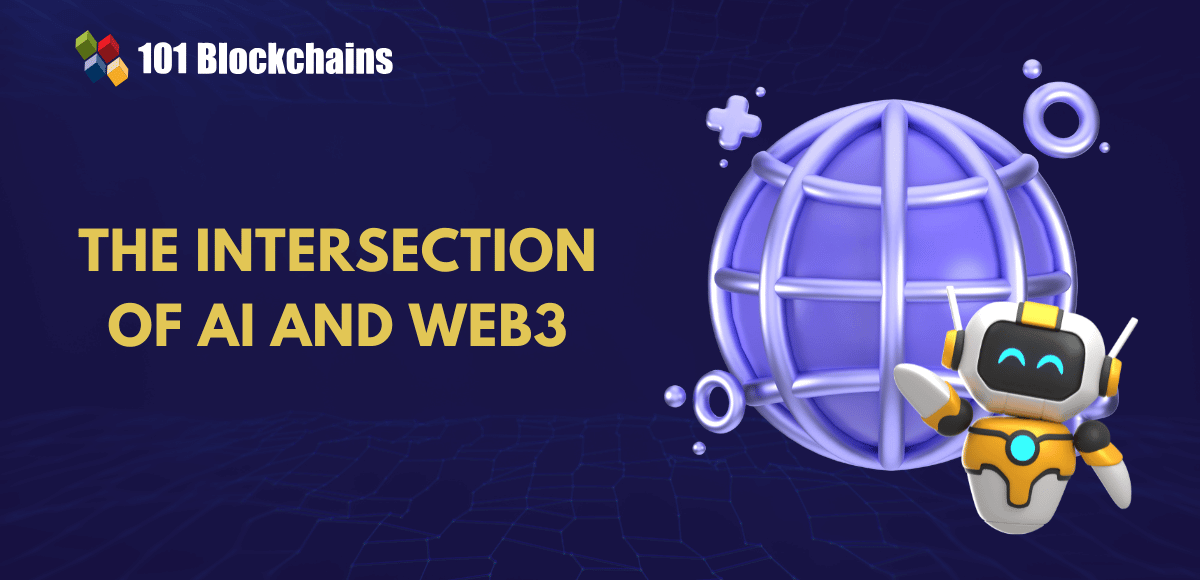Learn how blockchain truly works, master key definitions, and uncover what makes smart contracts so "smart." Dive into the fundamentals, gain valuable insights, and start your blockchain journey today!

- Web3
James Howell
- on June 02, 2023
Ultimate Web3 Glossary For Beginners
The advancements in web technology have served as promising inputs for changing how we perceive and use the internet. User experiences in the existing Web model have been criticized on the grounds of limitations in privacy and many other issues. Therefore, people and businesses want to learn web3 and find out how it is better than the existing version of the Web.
Learning about the important terms in web3 before you start browsing through web3 fundamentals is important. You can find a better understanding of web3 concepts with a detailed web3 glossary to learn about the important terms. Most beginners struggle in learning about web3 because of the difficulties in understanding the terms in web3. The following post offers you a detailed guide to important web3 terms with a brief description of the meaning of the terms.
What is Web3?
Before you start following a web3 dictionary, it is important to learn the definition of web3. You can understand the meaning of web3 by referring to the journey of evolution of the internet. The internet has changed from the traditional static pages used to communicate information to modern social media and e-commerce websites.
Now, the developments in web technology can lead to the creation of new user experience paradigms, leading towards web3. It is still in a nascent stage as most of the web experiences utilize the principles of web2. In the third stage of the evolution of the Web, it is important to note that users would be the ones in control.
A detailed understanding of how web3 work would shed light on the ways in which web3 uses blockchain. You can think of web3 as the internet developed on the blockchain or other distributed ledger technologies.
On top of it, the fundamentals of web3 would also reflect on the necessity of creating a semantic web with capabilities for natural language processing, 3D graphics, and decentralized organizations. Web3 aims to make the internet more accessible and permissionless while reducing the need for depending on big tech firms.
Build your identity as a certified blockchain expert with 101 Blockchains’ Blockchain Certifications designed to provide enhanced career prospects.
Glossary of Web3 Terms
The discussions about the advantages and potential of web3 have led many people to seek viable resources to learn about web3 and its working. However, beginners can come across doubts such as “Where to start with web3?” as they find multiple resources for learning about web3. Interestingly, you can rely on a glossary of important web3 terms for understanding the foundations of web3. Here is an outline of the terms you would frequently encounter in the web3 landscape.
-
Account
An account in web3 is similar to the accounts on social media platforms or an email service provider. The most important terms in web3 for beginners would focus on accounts that imply a dedicated space for users in a blockchain or web3 network.
Users can access their accounts through a public and private key pair for accessing and controlling the tokens in a specific address. In the case of Ethereum-compatible blockchain networks, you can rely on a Secret Recovery Phrase for generating multiple accounts.
-
Address
The address in web3 is an important component for ensuring the transferability of transactions on blockchain networks. Users can rely on the ‘public key’ for identifying users and sending or receiving transactions on the blockchain network. The address in web3 refers to an alphanumeric character string, which you can also convert into a QR code.
Curious to develop an in-depth understanding of web3 application architecture? Join the Standard & Premium Plans and Enroll Now in Web3 Application Development Course!
-
Augmented Reality
Augmented Reality or AR is one of the formidable technological innovations which would define the future of web3. It has been considered one of the popular web3 synonyms as AR technology offers immersive experiences envisioned in web3.
Augmented Reality or AR is only one of the components of web3, which utilizes glasses, smartphones and other devices for recreating real-world experiences in a digital environment. AR could involve the use of 3D modelling, sensing, tracking and intelligent interaction.
-
Airdrop
Airdrop is one of the common terms in the web3 landscape with multiple value advantages. It is a common term in web3 glossary collections and describes token distribution methods used for introducing new cryptocurrencies or tokens to specific wallet addresses. Web3 projects can use airdrops as marketing initiatives by facilitating airdrops to users completing tasks such as app downloads or referrals.
Want to become a Cryptocurrency expert? Enroll Now in Cryptocurrency Fundamentals Course
-
Beacon Chain
The outline of common terms in the domain of web3 would also point to the Beacon Chain. It is one of the popular additions to a web3 dictionary for newcomers and describes the scope for innovation in web3. Beacon Chain is a dominant element in the web3 infrastructure of Ethereum. It has been developed as the foundation for providing the shift to Proof of Stake consensus from the Proof of Work consensus mechanism.
-
Block
Block is the fundamental component of blockchain technology and an important highlight for web3. You could not find a list of web3 synonyms without references to a block. Blockchain is a digital database or ledger of transactions that go through constant updates, and the changes are synchronized across different nodes in the network.
After the addition of a specific number of transactions to the ledger alongside the verification of consensus, the transactions are cryptographically bundled into a single block. The block is then recorded on the chain, which forms the basis of the next block in the chain.
Excited to learn the basic and advanced concepts of ethereum technology? Enroll Now in The Complete Ethereum Technology Course
-
Block reward
Another important aspect about blocks in a web3 terminology list would point at block rewards. The block reward is an important component in a web3 glossary as it defines the reward offered to the validator or miner after successfully hashing a transaction block. Block rewards could be offered as a combination of cryptocurrencies and transaction fees. It is important to note that the composition of block rewards would depend on the policy adopted by the cryptocurrency.
-
Blockchain explorer
Most of the activities in web3 would have a direct or indirect association with blockchain. You can find terms like blockchain explorer frequently in glossaries on web3 for beginners, as they have significant functionalities.
Blockchain Explorer is an application that works with a blockchain network as an API for displaying information about activity on the blockchain. As a result, blockchain explorers can help in finding specific information about blockchain networks. For example, Etherscan delivers effective functionalities of blockchain explorer on Ethereum and many other blockchain networks.
-
Bridge
The list of essential terms in web3 would also draw attention toward bridges, which have emerged as promising answers to concerns of interoperability. The bridge is an effective tool tailored for transferring assets from one blockchain network to another. It is also important to note that all bridges do not feature the same design and have different functionalities.
-
Byzantine Fault Tolerance
Byzantine Fault Tolerance is one of the important highlights in the glossary of basic web3 terms. It aims to address the concerns of malicious intent in web3. The answers to “Where to start with web3?” can guide web3 users along different paths. Byzantine Fault Tolerance aims at ensuring that a network has been designed to address the concerns of failure due to technical failure or malicious intent of users.
Learn the fundamentals, challenges and use cases of Web3.0 blockchain from the E-book: AN INTRODUCTION TO WEB 3.0 BLOCKCHAIN
-
Blockchain trilemma
The definition of blockchain trilemma is also an important highlight in the domain of web3 education. It is important to note that blockchain trilemma accounts for three factors: security, scalability, and decentralization. As you dive deeper into how web3 work, you will find that blockchain systems struggle to maintain a balance between the three factors. Therefore, the blockchain trilemma implies that you have to sacrifice one of the terms to achieve better results in the other two.
-
Centralized Exchanges
Centralized exchanges have evolved as one of the popular applications in the web3 ecosystem with promising value advantages. Centralized exchanges are cryptocurrency exchanges run by third-party agencies to sell and buy cryptocurrency. One of the distinctive highlights of centralized exchanges is the fact that they are custodial in nature. Notable examples of centralized exchanges include Gemini, Kraken and Coinbase.
Want to get an in-depth understanding of crypto fundamentals, trading and investing strategies? Join the Standard & Premium Plans and get free access to Crypto Fundamentals, Trading And Investing Course.
-
Consensus Mechanism
The consensus mechanism is one of the important web3 synonyms you would often encounter. It refers to the process implemented by a group of nodes or peers on a blockchain network to reach an agreement regarding the validity of transactions. The popular examples of consensus mechanisms refer to Proof of Stake and Proof of Work.
-
Cryptography
Cryptography is a crucial requirement in web3 for ensuring advantages for security. It refers to a collection of secure communication practices that decide how much data shared can be seen by other users in the network. In most cases, cryptography involves the conversion of data into different formats that would be unrecognizable to unauthorized users. One of the basic examples of cryptography points at encrypted messages, which replace letters with numbers in a combination that only the sender and receiver can understand.
-
Centralized Finance
Centralized Finance, or CeFi, is a top highlight in the web3 space. It refers to the practice of obtaining loans and interest on digital assets such as Bitcoin, Ether, or stablecoins. In such cases, you can find out the benefits of web3 for beginners by focusing on the limited need for taking care of the assets. The reduced efforts in managing your assets could offer an advantage in using centralized finance by focusing on broader strategies for growth.
-
Decentralized Autonomous Organizations
DAOs, or Decentralized Autonomous Organizations, are a flexible approach to creating and managing digital organizations on the foundations of blockchain. The DAO offers a community-based approach to the governance of organizations. It offers a new and decentralized business model, where every network participant is an owner of the organization rather than a centralized entity.
Excited to develop fluent knowledge of the DAO ecosystem? Join the Standard & Premium Plans and Enroll Now in DAO Fundamentals Course!
-
Decentralized Exchange
Decentralized Exchange, or DEX, is a platform used for exchanging cryptocurrencies on the basis of functionalities integrated into the blockchain through smart contracts. The web3 dictionary on DEXs also showcases the facility of direct trading among peers or with liquidity pools. It is similar in working to centralized exchanges, albeit without any custodians for your assets.
-
DeFi
Decentralized Finance, or DeFi, represents a new financial system for web3 with concepts enabling easier financial services access. The concepts involved in DeFi include traditional financial services such as loans and interest-centric financial instruments. On top of it, DeFi also leads to introducing new solutions, such as liquidity pools and token swapping in the finance domain.
Want to learn and understand the scope and purpose of DeFi? Enroll Now in Introduction to DeFi- Decentralized Finance Course
-
Double Spending
Double spending is one of the common themes in the foundations of blockchain and web3. It is one of the prominent security concerns in the blockchain. Web3 solutions have to address the double spending problem by using the consensus mechanism to ensure that the same transaction does not go through twice.
-
ERC
ERC, or Ethereum Request for Comment, is a top addition among a collection of terms in web3 for beginners with significant influence on the future of web3. Ethereum Request for Comment is the proposal for modification to the Ethereum ecosystem, which has passed the approval stage. It points out a collection of standards used for a specific operation on the Ethereum network.
-
Faucet
Faucet refers to an application that could dispense cryptocurrency. Web3 developers can come across faucets in the test network for testing the dApps or smart contracts before deploying them live on the main net. In addition, faucets are also recommended choices for users who want to work on blockchain networks with limited risk to their finances.
Curious to understand the complete smart contract development lifecycle? Join the Standard & Premium Plans and get free access to the Smart Contracts Development Course Now!
Conclusion
The overview of important terms in a web3 glossary provides a fundamental impression of concepts that build the web3 landscape. In the long run, web3 would evolve into a common standard for using the internet and the solutions within. Therefore, professionals in the field of technology need to learn web3 concepts and prepare for disruptive changes in the future.
The glossary of web3 terms is only the beginning of your extensive journey of becoming an expert in web3. You should start learning more about web3 with the help of professional training courses and certification providers. Take a look at the top courses on web3 concepts and a professional web3 certification curated by experts right now.
*Disclaimer: The article should not be taken as, and is not intended to provide any investment advice. Claims made in this article do not constitute investment advice and should not be taken as such. 101 Blockchains shall not be responsible for any loss sustained by any person who relies on this article. Do your own research!








